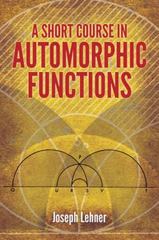Question
Instructions: The prevalence of Fake News over the last several years has crept its way into a lot of people's lives, especially on social media.
Instructions:The prevalence of "Fake News" over the last several years has crept its way into a lot of people's lives, especially on social media. But how do people respond when they are called out for posting fake news? Imagine we run a study where a Facebook user posts a fake news story on his timeline. When other people point out that the news is "fake", the user responds in one of two ways. In the "Rude Disagree" condition, the user gets angry, calling those who said his post was fake "morons, losers, and uninformed idiots", and rudely disagrees that he shared fake news (nice guy, huh!). In the "Polite Disagree" condition, the user still disagrees that he posted fake news, but he does so by politely disagreeing that he shared fake news (noting "I know you might have good intentions, but the news I posted is actually correct"). Participants read one of these two conditions and are asked to rate the statement, "The Facebook user seems like a rude person" on a scale ranging from 1 (Strongly disagree) to 6 (Strongly agree).
Using this study set-up, answer the questions below and then transfer those answers to your Crash Course in Statistics - Thet-Test Quiz #2 in Canvas (1 point per question).IMPORTANT: The answer options on Canvas may not be in the same order you see them below, so make sure to copy over the CONTENT of the answer and not simply the answer letter (A, B, C, D, or E). Note: If you want to run these analyses yourself, look for the SPSS file called "t-Test Crash Course Data - Summer Fake News" in Canvas - not required, but definitely recommended!)
1). What is the independent variable in this study?
A. Whether the Facebook user agreed or disagreed that he shared fake news.
B. Ratings of "The Facebook user seems like a rude person".
C. Ratings of "The Facebook user posted fake news".
D. Whether the Facebook user rudely or politely disagreed that he shared fake news.
E. There is too little information in this study to determine the independent variable.
2). What is the dependent variable in this study?
A. Whether the Facebook user agreed or disagreed that he shared fake news.
B. Ratings of "The Facebook user seems like a rude person".
C. Ratings of "The Facebook user posted fake news".
D. Whether the Facebook user rudely or politely disagreed that he shared fake news.
E. There is too little information in this study to determine the dependent variable.
You run at-Test on this data set and get the following SPSS output (note that I edited out some columns that you don't need for your write-up). Using this output, interpret the information.


Step by Step Solution
There are 3 Steps involved in it
Step: 1

Get Instant Access to Expert-Tailored Solutions
See step-by-step solutions with expert insights and AI powered tools for academic success
Step: 2

Step: 3

Ace Your Homework with AI
Get the answers you need in no time with our AI-driven, step-by-step assistance
Get Started


